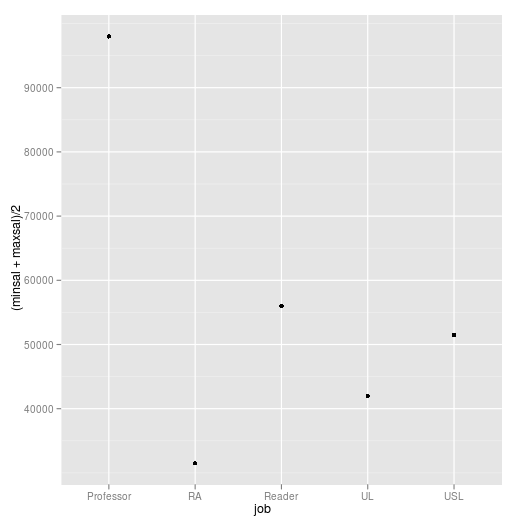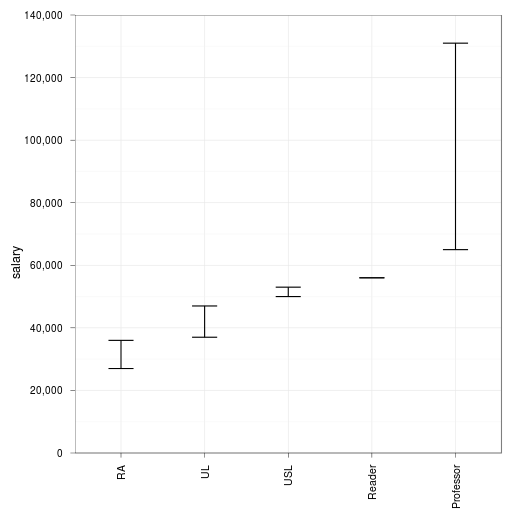
|
R: graphs 3: more examples
|
Back to Local tips for R
http://www.psychol.cam.ac.uk/statistics/R/graphs3.html
|
Data and a quick plot:
library(ggplot2)
salaries = data.frame( # approximate, from jobs.ac.uk
job= c("RA", "UL", "USL", "Reader", "Professor"),
minsal=c(27000, 37000, 50000, 56000, 65000),
maxsal=c(36000, 47000, 53000, 56000, 131000)
)
# Start with a basic plot. The levels will be in the wrong order (they'll be alphabetized), and the plot isn't really of what we want:
p1 = qplot(job, (minsal+maxsal)/2, data=salaries)
p1

Now re-order the factor and do a nicer plot:
# job is a factor, but with its levels in alphabetical order... which will then be the order used in the plots. So to re-order them:
salaries$job = factor(salaries$job, levels=unique(salaries$job)) # arrange the levels in the order they appear first in the table
# Now let's get what we really want:
p2 = qplot(job, data=salaries, geom="blank", xlab=NULL, ylab="salary") + # don't plot any Y data in the basic plot; change the axis labels
coord_cartesian(ylim=c(0, 140000), wise=TRUE) + # change the Y axis scale ("wise=TRUE": recalculate the visual divisions appropriately)
theme_bw() + # make the theme black-and-white rather than grey
opts(axis.text.x=theme_text(angle=90, hjust=1)) + # rotate the X axis text anticlockwise 90 degrees, and justify (0 left, 0.5 centre, 1 right)
geom_errorbar(aes(ymin = minsal, ymax = maxsal), width=0.3) + # add error bars
scale_y_continuous(formatter = "comma", expand=c(0,0)) # add commas, and have it properly zero-based
print(p2)

See also dot plots.